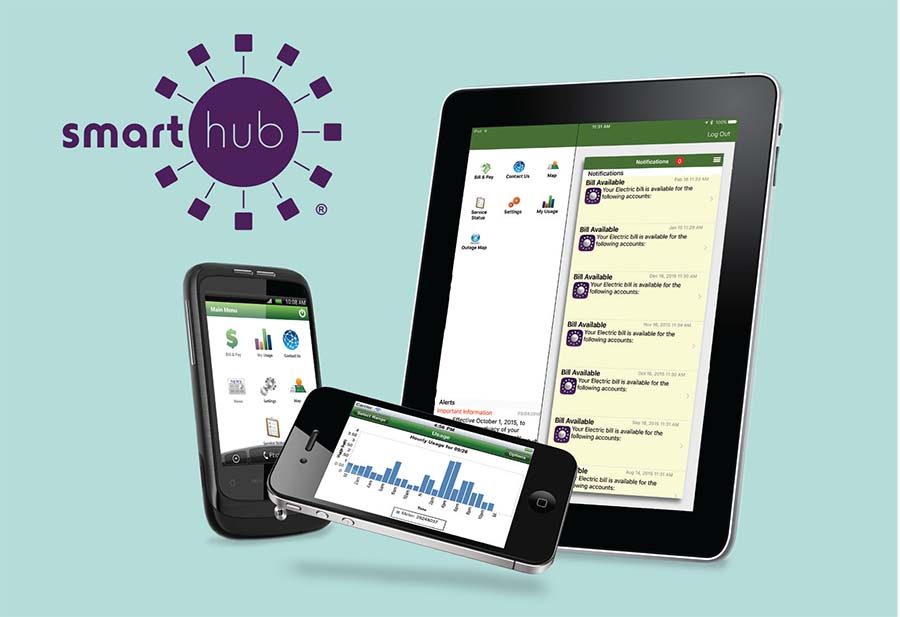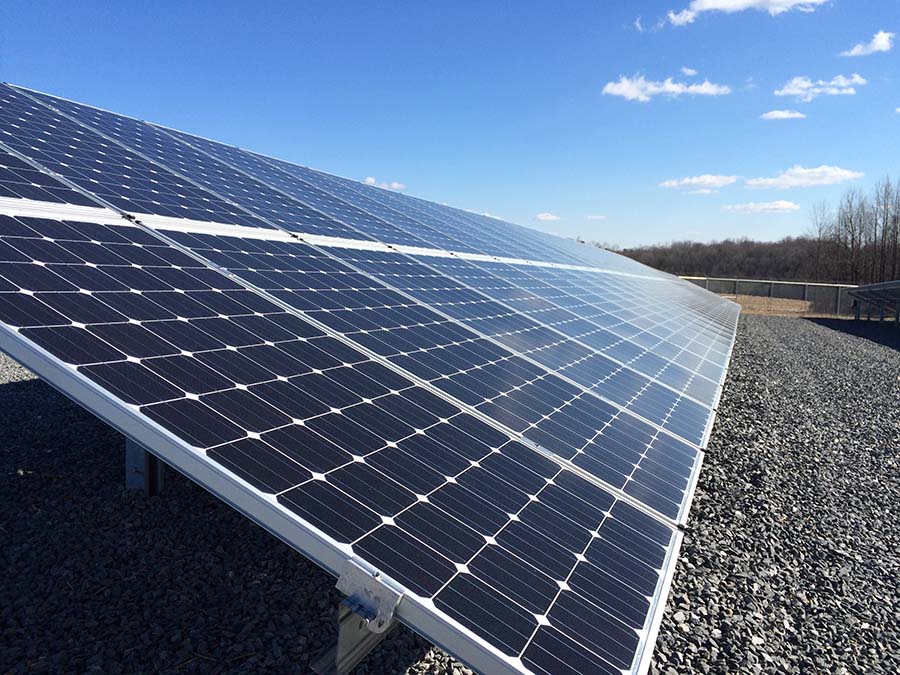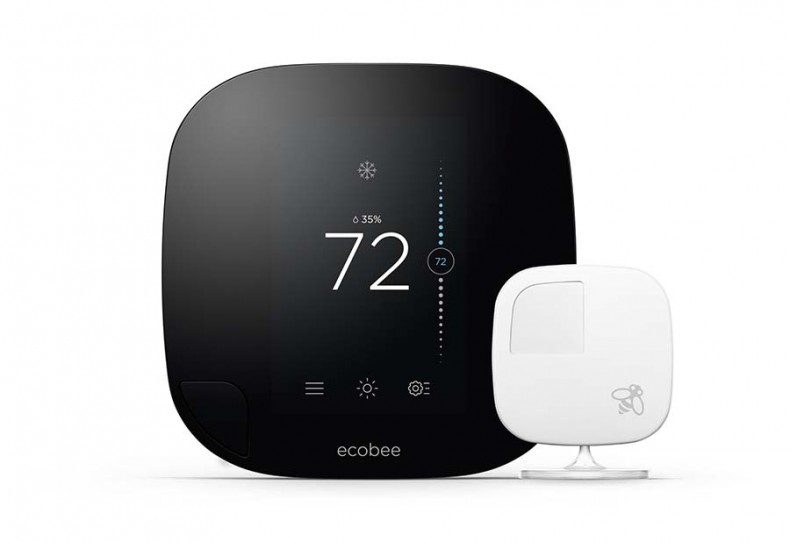Innovation
An expectation shared by cooperatives & members
Connected thermostats allow co-op members to control the temperature of their home remotely. In pilot programs, the thermostats have also helped cooperatives save significant costs by scaling back power usage in moments when electricity is most expensive.
Ding. An alert from your electric cooperative chimes to let you know your energy use is above normal.
You open your co-op’s app on your phone or log into an energy portal online to investigate. The spike in electricity consumed could represent a change in your daily routine or something more significant, like a failing appliance or continuously running device. Regardless, you’ve identified — in a moment — that there’s an issue and can take steps to correct it quickly.
Electric cooperatives are able to offer meaningful services like high usage alerts and real-time energy data because of sophisticated technology integrated into their systems. Each of North Carolina’s 26 electric cooperatives is locally owned and operated, and the programs and services offered are matched to the unique needs of local members.
Although some needs vary, one point holds true: All electric cooperatives are focused on best serving their members. As members’ needs and expectations change, cooperatives innovate to bring new solutions to those members.
These innovations are possible because of our purpose, our knowledge and an underlying, modern metering technology called Advanced Metering Infrastructure (AMI). In North Carolina, and across the nation, electric cooperatives lead in the deployment of these meters, which measure energy use and transmit information in almost real-time.
This technology is used to design programs that give electric cooperative members insight to understand their energy use. ‘Education’ is a cooperative principle, and co-ops are committed to providing members with knowledge to make informed decisions about their energy habits. Examples of some of the programs provided by co-ops and rooted in this technology are:
Pay-As-You-Go Options
This program allows cooperative members to pay up front for electricity with smaller, more frequent transactions rather than waiting for a monthly bill. Similar to a prepaid cell phone, this concept puts members in control of their budgets and energy consumption.
Energy Management Portals & Apps

Online energy management portals, like SmartHub, allow members to track daily and hourly energy use.
Online energy management portals and cell phone apps allow members to track daily and hourly energy use. Some systems overlay outdoor factors that can influence energy use including temperature, cloud cover and wind speed.
Usage Alerts
The technology incorporated by many electric cooperatives gives members the ability to set up email and text message alerts if energy use approaches a designated threshold. This keeps members on budget and eliminates any surprises that could come on the next bill.
Exploring Trends
All cooperative innovation is spurred by a purpose to serve the needs of members, which means innovation extends beyond managing energy use and into the bigger energy picture. Co-ops are known for studying trends in the power industry and adopting technology and business practices that make sense for their members.
As concepts that could benefit members emerge, like distributed energy resources and Internet-connected devices, electric cooperatives often pilot programs that blend these emerging technologies with the traditional goal of providing members with reliable and affordable electricity. Examples include community solar farms, the deployment of connected thermostats and even the exploration of microgrids.

Community solar farms are one of many ways that North Carolina’s electric cooperatives are innovating to meet members’ needs and expectations.
By the end of 2016, more than 20 community solar farms will be online in electric cooperative service areas in North Carolina. Community solar projects make participating in the solar energy movement accessible to all cooperative members, without the challenges of installing rooftop systems.
Along the same lines, North Carolina’s electric cooperatives are working with their power supplier to test the concept of microgrids in two locations. Microgrids are sections of the power grids that can operate independently from the larger grid in an emergency situation or when independence could mean cost savings, but they typically remain connected to ensure reliable service. These two projects will allow the state’s cooperatives to learn more and test possibilities for incorporating microgrids into future strategies to make the system more resilient and sustainable while also helping members reduce their energy use and costs.
Another option being introduced to some cooperative members is the idea of connected thermostats.
Members have the convenience of adjusting the temperature of their home remotely, and it also allows them to participate in cooperative-lead efforts to scale back on energy use during times of peak demand when electricity is most expensive. The cooperative can send signals to the thermostats to run a few degrees cooler or higher (depending upon the season), and collectively, these thermostats offer real savings to members.
“Cooperation among cooperatives” is a founding cooperative principle, and the co-ops currently participating in these cutting-edge programs are sharing their knowledge with their electric cooperative peers to determine if similar programs could be a fit locally.
As member-owned, not-for-profit utilities, North Carolina’s electric cooperatives will continue to innovate and connect with members in ways that match local needs and expectations. Electric cooperatives are driven by people, not profits, and improving the quality of life for members is a priority.
Visit EmpowerMeNC.com to discover the innovative energy services and solutions offered by your electric cooperative.
-
Share this story:




